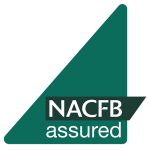What are the biggest misconceptions among property investors about light refurbishment, and financing these projects?
We often find that applicants don’t fully understand the differences between light, medium and heavy refurbishment loans. Despite the fact that the majority of lenders will not accept any structural work, or any work that requires planning permission or via Permitted Development, for light refurbishment bridging loans, we still get such applications; we then suggest what type of loan would actually be suitable.
There’s also a wrongly-held belief that because in most light refurb cases the client will not want the lender to fund build costs, then lenders will not ask for proof of funds for the refurbishment costs. This is not the case.
In addition, clients often think that lenders will lend off the GDV (GDV is the Gross Development Value once all works are completed) for the Day 1 maximum loan whereas the reality is that lenders will work off the current value for the Day 1 lend.
Whilst we are talking about GDV, this in itself can be misunderstood by some and so just to clarify, the Gross Development Value (GDV) is an estimate of the open market capital value or rental value the development is likely to have once it is complete. It may be calculated as part of an initial development appraisal and may then be continually assessed to help determine whether the project is likely to be, or has been profitable.
It is calculated based on the market conditions prevailing at the date of the valuation, and may be based on an analysis of recent property transactions for similar properties in the area of the development. This can include asking prices, sale prices, information provided by letting agents or estate agents, or assessments provided by development surveyors.
With both light and heavy refurbishment projects, inexperienced investors don’t always appreciate that lenders require a detailed Schedule of Works – we often receive a hastily-written list on a piece of scrap paper instead, which doesn’t impress anyone! A detailed Schedule of Works is required as it gives both the broker and lender comfort that the client knows what they are doing and for example, we have a template that we provide brokers to help them get this information right first time.
What are the biggest misconceptions among property investors about heavy refurbishment, and financing these projects?
As with light refurbishment, clients think they will receive a quote on the back of cursory and approximate figures for the works. The reality is that we need clients to have done at least the basic work. This means establishing the current value of the site, demonstrating a good understanding of the cost of the refurb works as well as being realistic about timings, and including a contingency over-spend in the figures.
With heavy refurbishment loans, lenders will not complete until planning permissions are in place. Investors don’t always grasp this, but lenders need them to have a realistic timeline for when the full planning will be granted.
Again, clients often (wrongly) think the lenders will lend off the GDV for the Day 1 maximum loan rather than the current value for the Day 1 lend.
As with all bridging loans, the exit strategy is critical, especially in these more economically challenging times. An exit strategy (or two) should hopefully demonstrate that the investor has a realistic understanding of the market.
Applicants don’t always realise that if the build costs are high, or if the building works are large compared to the original property, or if the majority/all of the property is being knocked down, then this will then be classed as full development. As a result, rates increase and the level/detail of information required also increases.
It’s also important to stress that with ‘full’ development finance, costs increase. These include rates, valuations and QS re-inspection costs. In addition, lenders typically charge an exit fee. It is therefore advisable for investors to try and keep their project within the light to heavy refurb categories as this will mean reduced funding costs, less underwriting time and a wider choice of lenders to approach.
What is the most important factor that should always be included in a refurbishment loan application to ensure a smooth deal completion?
The most important factor that should always be included in a refurb loan application is a full Schedule of Works. This should include the details of what works are to be undertaken, how much each element will cost and how long it will take, including a contingency fund. Lenders do not look highly upon any ‘back of the fag packet’ figures!




















